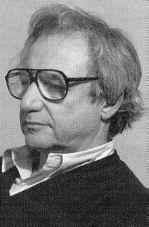|
|

|
Frank Gehry
Architect
Canada
|
Born in 1929, Canada
University of Southern California, Los Angeles
Harvard University, Cambridge, Massachusetts
Fellow, American Institute of Architects, 1974
Arnold W. Brunner Memorial Prize in Architecture, American Academy and Institute of Arts and Letters, 1977
Fellow, American Academy and Institute of Arts and Letters, 1987
Pritzker Architecture Prize, 1989
Resident: USA
Reprinted from Architecture & Urbanism magazine, No. 60 - 61, February 2001, Tehran:
While his name is frequently associated with Deconstructivism, because of the formal disjuncture that has characterized his work, Frank Gehry has not deliberately sought this connection. He has instead been reacting as a sensitive medium to his surrounding, which are temporal, fragmentary and undergoing constant change.
As the widely acknowledged father of "Los Angeles School", Gehry was the first of that group to reflect the chaos of what has until recently been known as "the city without a center", where freeways and automobiles have created a subculture all of their own.
This awareness has given his work an intentionally unfinished appearance of being still in progress, making it a very accurate representation of the modern urban condition of not only his own city, but also countless others throughout the world.
This look is augmented by his choice of what have typically been considered to be utilitarian materials, such as exposed, unpainted plywood, corrugated metal siding and chain link fence. As such, his work is comparable to a Kurt Schwitters College, where found objects that are ordinarily taken for granted are juxtaposed, and presented in a way that brings attention to their intrinsic beauty.
"I search out the work of artists, and use art as a means of inspiration. I try to rid myself... of the burden of culture and look for new ways to approach the work. I want to be open-ended. There are no rules, no right or wrong. I'm confused as to what's ugly and what's pretty."
As artist-architect, he has typically seemed to be more concerned with the sculptural and compositional aspect of his work than functional or programmatic requirements, and yet, in spite of his apparent lack of pragmatism, his buildings are remarkably considerate of client needs. This ability to balance between childlike playfulness and professionalism, while consistently making an on-going commentary on modern life, makes Gehry's contribution to contemporary architecture quite extraordinary.
Following Design: Winton Guest House, Wayzata, Minnesota, 1983
|
|
|
